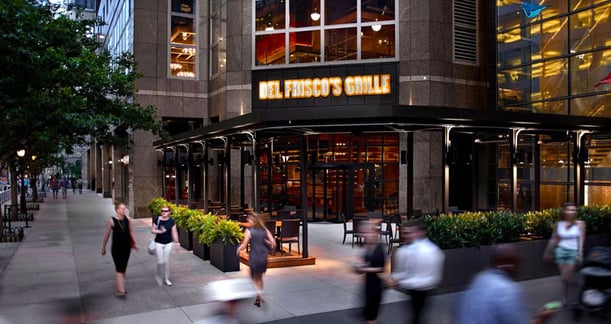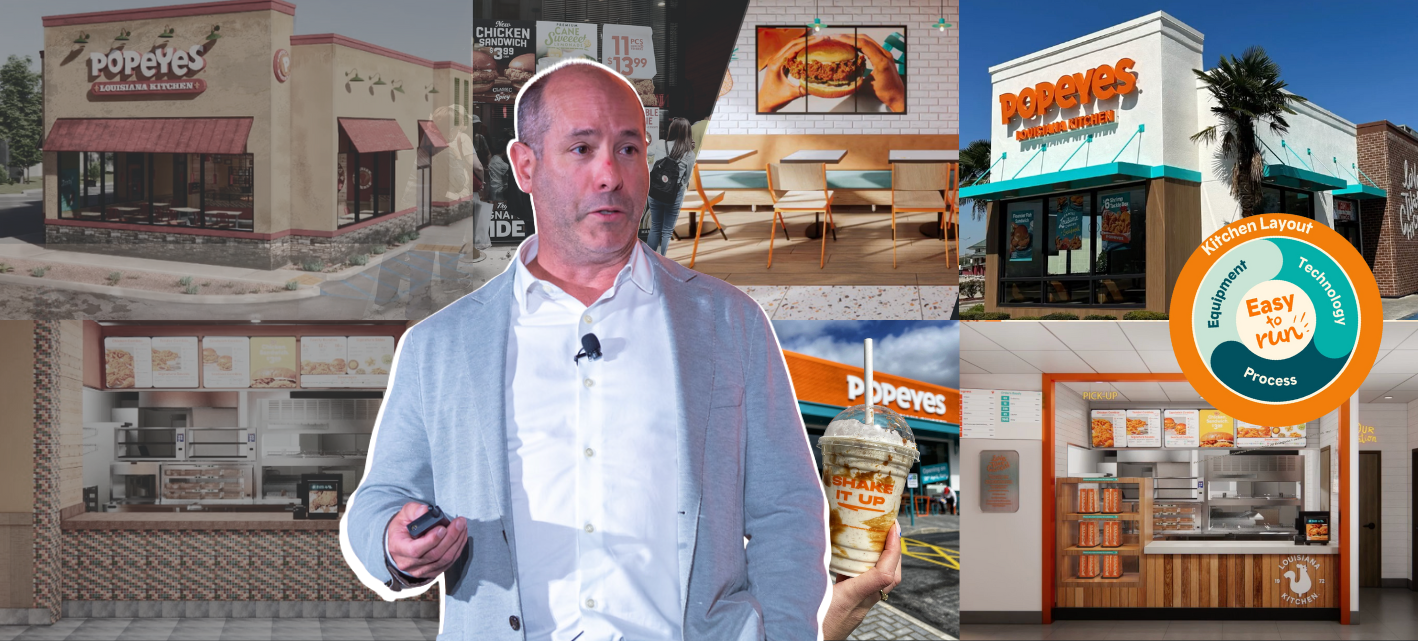The shift of consumer behavior in the digital age is leading restaurant chains to reassess their brick-and-mortar strategies. While there are some brands thriving and expanding, there is a growing trend towards consolidation.
For this reason, retailers and chain restaurants have set their sights on cutting costs in their stores — a focus which has made value engineering a hot topic for design & construction execs. In 2015 an HRC survey showed 75% of retailers planned to improve their spending efficiency by implementing value-engineering principles during store construction and renovation.
Value engineering can be a major source of savings, but only if done with balance and strategy. In this post, we outline how you can navigate the value engineering process to avoid common pitfalls and seize the opportunities that await.
Set Your Goals
Before your value engineering journey even begins, it’s important for store design and construction leaders to take some time to identify their goals. You can zero in on the right options by establishing what you want your design to achieve and how low your bottom line should go.
Del Frisco’s is a great example of a company that’s flourishing, partially thanks to their effective VE process. The group is opening two new restaurants this year, and several more in 2018. When asked about the most important factors for successful value engineering, their Chief Development Officer, Bill Martens, named setting a “realistic goal” as one of the top components.

Having a reasonable target is especially critical for determining your savings goals, since they can dramatically influence the required intensity of your value engineering approach. You can achieve as much as 10% in savings by starting your design and material selection process with VE already integrated. For savings of up to 20%, prepare to aggressively make cuts and be flexible with your design concept. Higher savings percentages typically require major reassessments of your design vision as a whole.
Pick Your Dream Team
Putting together the ideal team is the best strategy for value engineering success. But selecting the right people can be difficult. Gregory Schlegel, the Director of Store Design & Construction at EXPRESS, elaborates on a project team’s importance and where your members should be sourced from:
“Having the right partners participate in the development of any VE/VD opportunity increases the success rate. These partnerships may include internal (store design, purchasing, construction, visual, operations, marketing, etc.) as well as external (vendors, suppliers, architects, engineers, and general contractors) team members, determinant upon the area/s of evaluation. We leave egos and pre-conceived ideas at the door and work together with the common goal during the process.”
Cliff Powell, Director of Architecture & Engineering at TBC Corporation, recommends augmenting your team with some unexpected figures. “Talk with the people who will be working at the facility; from the manager to the lowest-paid associate in the store. You'd be surprised at some of the ideas and suggestions they have.”
When asked about the greatest obstacle in a VE project, Cliff concluded that the main challenge lies in forming a team that can work efficiently:
“The biggest value engineering obstacle is getting all departments to align and agree to a specific design and process. It’s hard enough to get all the key players in one room, let alone get everyone to agree on something that could help move the business forward in a positive direction.
One thing we have started working on is an internal committee created by senior-level management. The committee is comprised of those whom are thought to be the most forward thinking, ‘get-it-done’ personnel in each department. As needed, we pull in people from other departments, or look to outside vendors and consultants to assist where we may lack some of the knowledge. There are monthly (or more frequent) meetings to develop and improve plans for the near future and what we might be years from now.
By having key players from operations, design, procurement, etcetera, we are able to get the questions asked and help make the key changes needed to improve.”

Identify Low-Hanging Fruit
In every VE project, there are always a few clear and simple prospects for savings. “Low risk areas such as non-customer-facing zones are easy ones to validate for VE opportunities. Back-of-house materials and finishes are many times quick hits to save on the cost per sq. ft.,” says Gregory.
He goes on to suggest that looking to comparable buildings and businesses in the local market can be instrumental in discovering more promising opportunities, especially when it comes to materials and finishes. Did your comparison buildings use wood flooring or vinyl? Recessed lighting or track? Does it appear that the design choices are working out well, or are some elements holding up poorly? Why so? By asking yourself such questions when looking at other properties, you can get some good ideas to implement yourself, and also learn what mistakes to avoid.
Don’t Compromise Customer Experience
Avoid cutting out elements that contribute to a great experience for your customers. According to a recent Walker survey, customer experience will overtake price and product as the key brand differentiator by 2020. The same survey reveals that 86% of current consumers are willing to pay more for brands that offer a better experience, signaling that companies that adapt accordingly will be rewarded with more patronage. These incentives have lead to the prediction that, as soon as 2018, more than half of all organizations will begin prioritizing customer experience investments.
Cliff emphasizes how store design & construction leaders shouldn’t lose sight of CX as they proceed:
“When value engineering a project, the most important thing to keep in mind throughout the process is how will the end result affect our customer positively. It’s easy to get carried away with modifying a building, removing certain things, purchasing cheaper alternatives, and changing processes that could save the company some money, but could also have a negative result with the customer.
With every VE'd change, have a pros and cons checklist for both the company and customer. If you have more check marks next to the ‘pros’ column for both your company and the customer, it’s a successful value engineering project.”

If your choices steer you toward a design that’s generic, consider reevaluating. In this new market, consumers are most attracted to stores that offer novel atmospheres. For restaurants, atmosphere and experience can be doubly important. At one of our past RestaurantSpaces events, there was thorough discussion of how restaurants in particular must tread carefully during the VE process.
Consumers’ visits to restaurants are typically much longer than their visits to retail stores, giving them more time to assess and be affected by their surroundings. Because of this, compromising on experience-influencing materials and features can be a high-risk endeavor. Bill agrees that restaurants are better off VE’ing other elements, saying, “We focus primarily on items that don’t impact the guest experience.” This prioritization can be seen in the wow-worthy design of Del Frisco’s restaurants, which never fail to make a bold impression on customers.
Look Out for Hidden Costs
Cheaper isn’t always more affordable for your business. Less expensive materials may lead to more labor costs or require more maintenance, which your organization may not have the budget for. Additionally, cheaper materials that can’t hold up to wear and tear may require frequent replacement - potentially swallowing your savings down the road.
Schlegel offers up a great example of this:
“For instance, while paint is less expensive than wallcovering in material and labor, it may not always be the best choice for some applications, such as high traffic areas. Maintenance over the lifecycle of the lease should be a consideration.
Some retailers have a more robust M&R (maintenance and repair) budget to keep their stores updated, clean, and sharp, while others have a shallow budget that may translate into tired, poor-looking stores. And if the store doesn’t look fresh and inviting, today’s customer will look elsewhere.”
Stick to a Timeline
Schlegel points to time as the largest value engineering hurdle, explaining, “Time has historically been the biggest obstacle to successfully navigating VE/VD. In today’s world, with all of the diversity of talent and accessibility via the internet, you could source and sample forever, always looking for the next ‘best’ option. It takes time to re-evaluate a certain item or area, then how this change may or may not affect other areas within the store environment. Having a timeline builds the goalposts to work within.”
Establishing a timeline for your project can keep each part from lingering too long in the consideration stage. Discuss with your team members what deadlines are realistic for each task, then hold firm. By adhering to your timeline, your team is motivated to be efficient in their research and decision-making so as not to hold up the entire project.
Conclusion
Embracing value engineering is a strategic move whether you are a high-end restaurant chain or a discount retailer. For example, even thriving brand Shinola has been opening stores around the U.S., each sporting smart, value-engineered designs reflective of their location’s heritage.
With the retail and restaurant industries in a time of transformation, it's clear that store development and construction executives can achieve success with the correct strategy: striking the balance between cost-savings and impactful design.

Posted by
Chain Restaurants Reimagined.
The Retreat to Reimagine Restaurant Development, Design + Technology.
April 12-14, 2026 | Miami, FL





-3.png)
-4.png)
-3.png)



Comments